Pisgah National Forest
- December 27, 2023
- 0 comment
Located in the picturesque Appalachian Mountains of western North Carolina, Pisgah National Forest spans over 500,000 acres of diverse landscapes, encompassing mile-high peaks, cascading waterfalls, and densely wooded slopes. As a haven for outdoor enthusiasts, the forest boasts a rich tapestry of natural wonders, from the highest peaks in the eastern United States, including Black Balsam Knob and Mount Mitchell, to the serene expanses of the Pisgah Ranger District south of Asheville.

The forest is divided into three distinct ranger districts Grandfather, Appalachian, and Pisgah each offering a unique array of recreational opportunities. Hikers can explore a network of trails, including segments of the Appalachian Trail, while mountain bikers can tackle challenging routes like the Sycamore Cove Trail and Black Mountain Loop. With its elevation surpassing 6,000 feet and its inclusion of the Blue Ridge Parkway, Pisgah National Forest stands as a captivating landscape for those seeking to immerse themselves in the natural beauty of the southern Appalachian Mountains.
Characterizing Features of the Pisgah National Forest
- Diverse Topography: Pisgah National Forest showcases a diverse topography, ranging from mile-high peaks to deep valleys. This dynamic landscape provides a habitat for a wide variety of plant and animal species, making it a hotspot for biodiversity. From the towering summits to the lush valleys, visitors can experience the full spectrum of Appalachian ecosystems within this expansive forest.
- Waterfalls and Rivers: One of the defining features of Pisgah National Forest is the presence of cascading waterfalls and pristine rivers. These water bodies not only contribute to the scenic beauty of the forest but also serve as vital components of the local ecosystems. Visitors can explore waterfall-laden trails and enjoy the soothing sounds of flowing rivers, creating a serene and immersive experience in nature.
- Extensive Trail System: The forest boasts an extensive network of trails, offering opportunities for hikers, backpackers, and outdoor enthusiasts of all levels. Whether traversing the iconic Appalachian Trail, meandering through the Linville Gorge Wilderness, or embarking on shorter day hikes, the trails in Pisgah provide a means to explore the diverse terrain and witness the natural wonders that define this national forest.
- High Peaks and Scenic Vistas: Pisgah National Forest is home to some of the highest peaks in the eastern United States, including notable summits like Black Balsam Knob and Mount Mitchell. These elevated vantage points offer breathtaking panoramic views of the surrounding mountains and valleys, providing visitors with a sense of awe and appreciation for the grandeur of the southern Appalachian region.
- Old-Growth Forests: Within Pisgah National Forest, approximately 46,600 acres of old-growth forests have been identified, with the Linville Gorge holding a significant portion. These ancient woodlands, characterized by towering trees and undisturbed ecosystems, provide a glimpse into the pristine wilderness that once covered much of the eastern United States.
- Recreational Opportunities: The forest is a haven for outdoor activities, catering to a wide range of interests. From hiking and backpacking to mountain biking and rock climbing, Pisgah offers a playground for adventure seekers. The diverse recreational opportunities ensure that visitors can engage with the forest in ways that suit their preferences and skill levels.
- Blue Ridge Parkway Integration: Pisgah National Forest is intricately connected to the Blue Ridge Parkway, a scenic highway renowned for its breathtaking views. The parkway transects the forest, providing convenient access points to explore the natural wonders within Pisgah. This integration allows for a seamless journey through the region’s beauty, with numerous trailheads and overlooks along the way.
- Educational and Historical Sites: Beyond its natural allure, Pisgah National Forest is home to educational and historical sites, such as the Cradle of Forestry. These sites offer insights into the history of American forestry and the conservation efforts that have shaped the forest’s development, adding a layer of cultural and educational significance to the overall visitor experience.
History
The history of Pisgah National Forest is deeply rooted in the early conservation movements of the 20th century. Established in 1916, it stands as one of the pioneering national forests in the eastern United States. The preservation efforts that led to its creation involved the acquisition of approximately 86,700 acres, once part of the Biltmore Estate, which were sold to the federal government in 1914 by Edith Vanderbilt. Notably, these forest tracts marked some of the initial acquisitions by the Forest Service under the Weeks Act of 1911. This legislation, crucial for the establishment of national forests in the eastern U.S., provided the necessary authority for such initiatives. While national forests had already taken root in the western United States, the Weeks Act catalyzed the expansion of conservation efforts to the eastern regions.
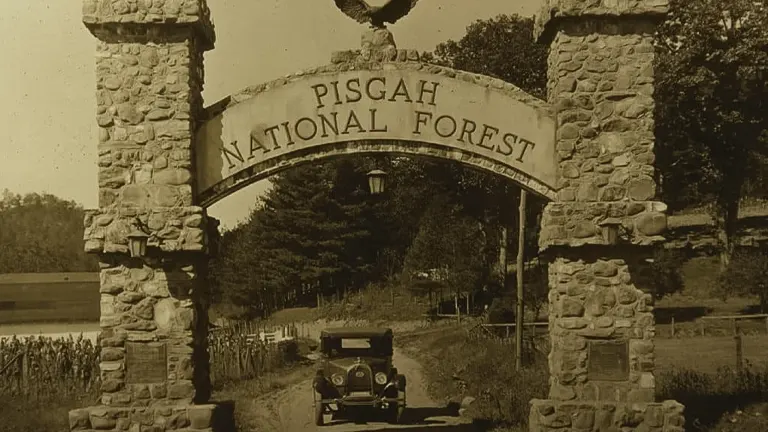
Adding to its historical tapestry, Pisgah National Forest witnessed significant augmentations over the years. Boone National Forest was incorporated into Pisgah on March 25, 1921, followed by the addition of the majority of Unaka National Forest on July 10, 1936. In 1954, administratively merging with the Croatan and Nantahala national forests, Pisgah became part of the collective entity known as the National Forests of North Carolina.
The forest not only serves as a testament to early conservation initiatives but also has played a pivotal role in the development of American forestry. The southern part of Pisgah houses the Cradle of Forestry, once known as the Biltmore Forest School, where the first school of forestry in the United States operated during the late 19th and early 20th centuries. Founded at the direction of George Washington Vanderbilt II, the builder of the Biltmore Estate in Asheville, the school’s Forestry Education, led by Carl Schenk, a native German, became integral to the region. The Cradle of Forestry and the Biltmore Estate played a significant role in the establishment of the U.S. Forest Service. Today, these lands remain an educational and recreational hub within Pisgah National Forest, preserving the historical roots of American forestry for present and future generations.
Importance in Conservation and Recreation of Pisgah National Forest
Pisgah National Forest holds immense importance as a dynamic intersection of conservation and recreation, contributing significantly to the environmental well-being of the eastern United States. The forest represents a pioneering effort in conservation, preserving over 500,000 acres of diverse ecosystems, including old-growth forests and vital watersheds. This vast expanse serves as a refuge for biodiversity, providing a habitat for numerous plant and animal species.

Beyond its ecological significance, Pisgah stands as a recreational haven, offering an extensive network of trails, majestic waterfalls, and towering peaks for outdoor enthusiasts. The forest’s trails cater to hikers, bikers, and nature lovers, fostering a deep connection between people and nature. The integration of the Blue Ridge Parkway enhances accessibility, ensuring that visitors can seamlessly explore the region’s natural wonders. As a living testament to the early 20th-century conservation movements, Pisgah National Forest exemplifies the harmonious coexistence of environmental preservation and recreational enjoyment, making it an enduring symbol of the delicate balance between human interaction and the preservation of our natural heritage.
Unique Location of Pisgah National Forest
Pisgah National Forest occupies a unique and captivating location within the Appalachian Mountains of western North Carolina, making it a distinctive gem in the eastern United States. Spanning over 500,000 acres, this vast expanse of wilderness is strategically positioned within the southern Appalachian Mountains, encompassing parts of the Blue Ridge and Great Balsam Mountains. Its elevation, reaching over 6,000 feet, contributes to the forest’s distinction as home to some of the highest peaks in the eastern United States, including iconic summits like Black Balsam Knob and Mount Mitchell.

The forest’s diverse topography, characterized by mile-high peaks, cascading waterfalls, and dense hardwood forests, creates a mosaic of habitats, supporting a rich variety of flora and fauna. The inclusion of tracts surrounding cities such as Asheville and Brevard, as well as land along the French Broad River Valley, adds to Pisgah’s unique character. This strategic placement not only makes Pisgah National Forest a haven for outdoor enthusiasts but also highlights its crucial role in preserving the ecological tapestry of the southern Appalachian region.
Diverse Vegetation and Unique Plant Species:
- Fraser Fir (Abies fraseri): Pisgah National Forest harbors the majestic Fraser Fir, a coniferous giant that dominates the higher elevations of the region. Recognizable by its silver-blue needles and stately appearance, the Fraser Fir contributes to the unique biodiversity of Pisgah’s montane ecosystems.
- Eastern Hemlock (Tsuga canadensis): Along the cool, moist habitats of Pisgah, the Eastern Hemlock thrives as a foundational evergreen species. Its graceful boughs provide essential shade to streamside environments, influencing both the flora and fauna that call the forest home.
- Flame Azalea (Rhododendron calendulaceum): Painting the landscape with hues of red, orange, and yellow, the Flame Azalea is a deciduous shrub that graces Pisgah National Forest. This showy species brightens the forest during its flowering season, creating vibrant displays amidst the greenery.
- Showy Lady’s Slipper (Cypripedium reginae): Within Pisgah’s diverse orchid community, the Showy Lady’s Slipper stands out with its large, pink-and-white pouch-shaped flowers. This striking orchid adds to the allure of Pisgah’s understory and showcases the region’s botanical richness.
- Painted Trillium (Trillium undulatum): The forest floor of Pisgah comes to life with the Painted Trillium, a delicate woodland wildflower. Its three-petaled blooms, often with hues of pink, create a carpet of color in the spring, making it a signature species in the diverse flora of Pisgah.
- Mountain Laurel (Kalmia latifolia): Kalmia latifolia, or Mountain Laurel, graces the lower elevations of Pisgah with its evergreen leaves and intricate, cup-shaped flowers. This native shrub contributes to the forest’s year-round greenery and adds to the diversity of plant life within the region.
- Fraser Magnolia (Magnolia fraseri): Found in the higher reaches of Pisgah, the Fraser Magnolia is an evergreen tree with large, glossy leaves. Its presence adds a touch of southern elegance to the forest, contributing to the richness of plant species at higher altitudes.
- Gray’s Lily (Lilium grayi): Lilium grayi, commonly known as Gray’s Lily, graces Pisgah National Forest with its elegant, nodding flowers. This native lily species can be found in open woodlands and meadows, adding to the botanical diversity of the region.
- Catawba Rhododendron (Rhododendron catawbiense): Rhododendron catawbiense, the Catawba Rhododendron, is a captivating evergreen shrub that thrives in the acidic soils of Pisgah. Its large clusters of vibrant flowers contribute to the enchanting landscapes of the forest, especially in the higher elevations.
- Yellow Birch (Betula alleghaniensis): Betula alleghaniensis, or Yellow Birch, is a deciduous tree that graces Pisgah’s hardwood forests. Recognizable by its distinctive yellow bark and slender form, this species plays a role in the diverse mosaic of tree species within the forest.
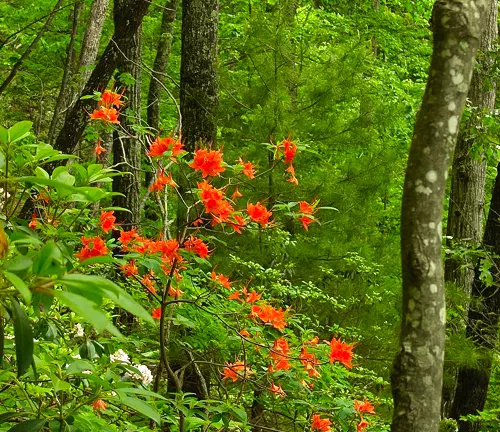
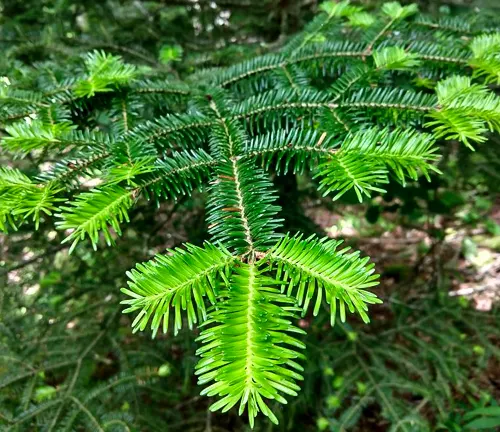
Different Species of Mushrooms in Pisgah National Forest
Fungi aren’t just decomposers and plant allies; they’re also the forest’s natural defense against harmful invaders. Some fungi act as assassins, targeting and eliminating harmful bacteria and fungi, safeguarding the forest from disease. Others secrete potent antibiotics that suppress the growth of harmful microbes, acting as a silent army protecting the ecosystem’s health.
There are many different species of mushrooms that can be found in Pisgah National Forest. Some of the more common species include:
- Chanterelle (Cantharellus cibarius): A highly prized edible mushroom with a golden-yellow color and a fruity aroma. Chanterelles are typically found under hardwood trees and are a favorite among mushroom hunters.
- Morel (Morchella): Another highly prized edible mushroom that is known for its unique appearance. Morels have a honeycomb-like cap and are typically found in areas with decaying wood and rich soil.
- Hen of the Woods (Grifola frondosa): A large, edible mushroom that grows in clusters on the base of trees. Hen of the Woods has a meaty texture and a savory flavor that makes it a favorite among mushroom hunters.
- Chicken of the Woods (Laetiporus sulphureus): An edible mushroom that is known for its chicken-like texture and flavor. Chicken of the Woods can be found growing on the trunks of hardwood trees and is a popular choice for vegetarian dishes.
- Oyster Mushroom (Pleurotus ostreatus): A popular edible mushroom that is known for its delicate flavor and velvety texture. Oyster mushrooms are typically found growing on dead or dying trees and are a favorite among mushroom hunters.
- Lion’s Mane (Hericium erinaceus): An edible mushroom that is known for its unique appearance and flavor. Lion’s Mane has a fluffy, white appearance and a sweet, seafood-like flavor.
- Reishi (Ganoderma lucidum): A medicinal mushroom that is known for its health benefits. Reishi mushrooms have been used in traditional Chinese medicine for centuries and are believed to support the immune system and promote longevity.
- Turkey Tail (Trametes versicolor): A colorful mushroom that is known for its medicinal properties. Turkey Tail mushrooms contain compounds that are believed to boost the immune system and fight cancer.
- Fly Agaric (Amanita muscaria): A distinctive mushroom that is known for its bright red cap with white spots. Fly Agaric is a toxic mushroom that contains psychoactive compounds and should not be consumed.
- Destroying Angel (Amanita bisporigera): A deadly poisonous mushroom that is responsible for the majority of mushroom-related deaths in North America. Destroying Angels are typically found growing under hardwood trees and should be avoided at all costs.
It’s important to remember that some mushrooms in the forest can be poisonous or even deadly, so visitors should exercise caution and only consume mushrooms that they are certain are safe to eat. or read “Mushroom Field Guide“
Fauna:
- Eastern Black Bear (Ursus americanus): The Pisgah National Forest is home to the Eastern Black Bear. These iconic mammals roam the forest, utilizing its diverse habitats for foraging and denning. Visitors may encounter these majestic creatures, a symbol of the wild beauty that Pisgah preserves.
- White-Tailed Deer (Odocoileus virginianus): Abundant in Pisgah, the White-Tailed Deer is a common sight among the forested landscapes. These graceful herbivores play a crucial role in shaping the forest ecosystem through their browsing habits.
- Wild Turkey (Meleagris gallopavo): The Wild Turkey thrives in the wooded areas and open spaces of Pisgah National Forest. Its presence adds to the rich avian diversity of the region, and lucky observers may catch a glimpse of these impressive birds.
- Eastern Coyote (Canis latrans): Canis latrans, the Eastern Coyote, is a versatile predator that inhabits Pisgah’s diverse ecosystems. This adaptable carnivore plays a key role in maintaining ecological balance within the forest.
- Red-Tailed Hawk (Buteo jamaicensis): The Red-Tailed Hawk, soars over Pisgah’s skies, utilizing the forested terrain for hunting. These raptors are a testament to the diverse bird of prey population that thrives in the region.
- Eastern Box Turtle (Terrapene carolina): Pisgah National Forest provides a suitable habitat for the Eastern Box Turtle. These terrestrial turtles are often encountered in the forest understory, contributing to the rich reptilian diversity.
- Brook Trout (Salvelinus fontinalis): In the cool mountain streams of Pisgah, the native Brook Trout, finds its habitat. A symbol of pristine aquatic ecosystems, these trout contribute to the biodiversity of Pisgah’s waterways.
- Timber Rattlesnake (Crotalus horridus): The Timber Rattlesnake, is a venomous snake that inhabits the forested regions of Pisgah. This species is part of the diverse reptilian fauna that adds to the ecological complexity of the forest.
- Pileated Woodpecker (Dryocopus pileatus): The Pileated Woodpecker is a striking bird species that calls Pisgah home. Its distinctive drumming sounds echo through the forest, and lucky observers may witness these impressive birds in action.
- Southern Appalachian Salamanders: Pisgah National Forest is a haven for various salamander species, including the Southern Appalachian Salamanders. These amphibians thrive in the moist environments of the forest, contributing to the region’s diverse herpetofauna.
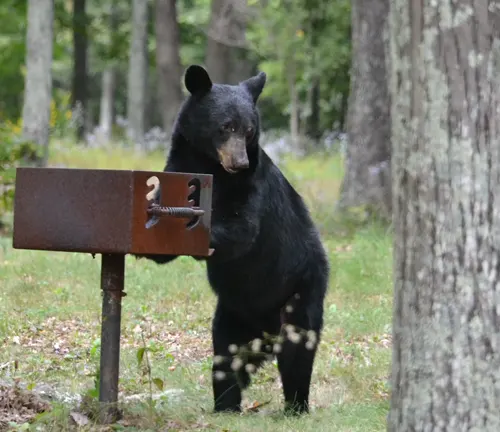
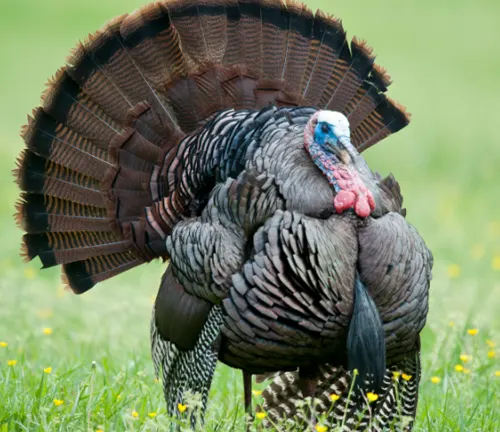
Importance as a Wildlife Corridor and Habitat for Threatened Species
Pisgah National Forest serves a crucial role as a wildlife corridor and habitat for threatened species, playing a pivotal role in preserving the biodiversity of the southern Appalachian region. The expansive forest, with its diverse ecosystems ranging from lowland valleys to towering peaks, provides a connected and continuous landscape that allows wildlife to move freely across its expanse. This connectivity is particularly vital as a wildlife corridor, facilitating the movement of species such as the Eastern Black Bear, White-Tailed Deer, and the elusive Eastern Coyote.
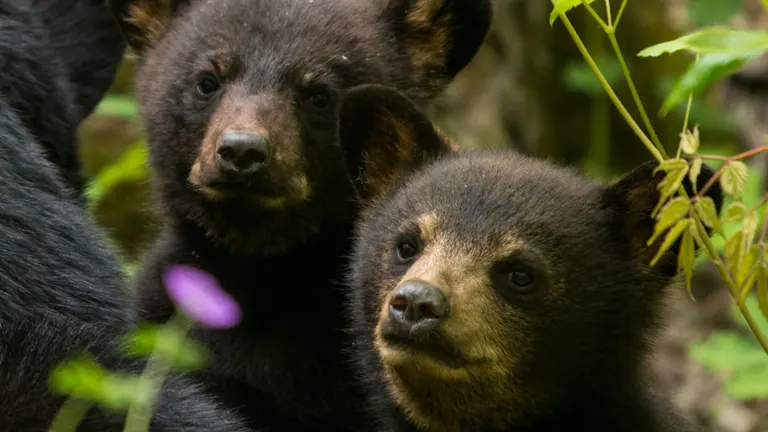
Additionally, Pisgah’s significance extends to its role as a habitat for threatened species, offering refuge and sustenance to fauna facing challenges elsewhere. The forest shelters populations of species like the Timber Rattlesnake and the Southern Appalachian Salamanders, contributing to the conservation efforts aimed at preserving the delicate balance of the region’s ecosystems. Pisgah National Forest, with its rich tapestry of habitats, stands as a vital sanctuary that not only sustains the diverse array of wildlife within its borders but also fosters genetic diversity and resilience for threatened species facing increasing pressures in their natural environments.
Activities in Pisgah National Forest for Visitors
1. Hiking and Backpacking
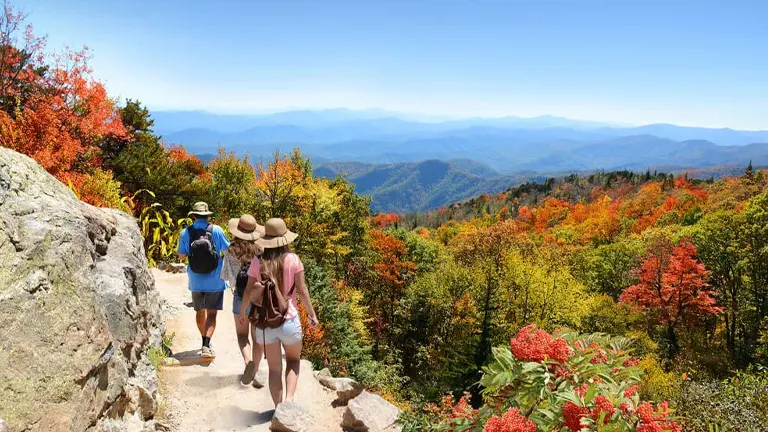
Pisgah National Forest offers an extensive network of trails, ranging from easy strolls to challenging backcountry hikes. Visitors can explore the diverse landscapes, including waterfalls, mountain vistas, and dense woodlands. Iconic trails like the Appalachian Trail and the Mountains-to-Sea Trail traverse the forest, providing opportunities for both day hikes and multi-day backpacking adventures.
2. Mountain Biking

With its varied terrain, Pisgah is a haven for mountain biking enthusiasts. The forest features a network of well-maintained trails that cater to riders of all skill levels. From flowy singletracks to adrenaline-pumping descents, mountain bikers can experience the thrill of two-wheeled exploration amid the scenic beauty of Pisgah.
3. Fishing

Pisgah National Forest is crisscrossed by pristine mountain streams and rivers, offering excellent fishing opportunities. Anglers can try their luck at catching native trout, including the iconic Brook Trout, in the cold, clear waters that flow through the forest. Fishing in Pisgah provides a serene and rewarding experience for both beginners and seasoned anglers.
4. Camping
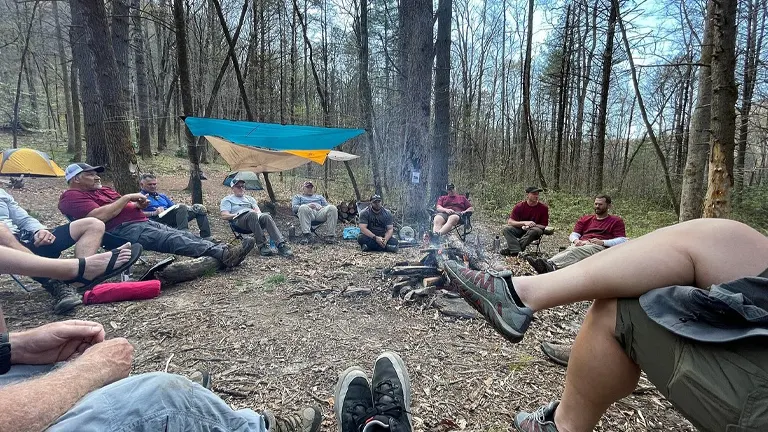
Camping enthusiasts can immerse themselves in the natural beauty of Pisgah by setting up camp in one of the forest’s designated campgrounds. Whether choosing a site near a babbling brook or at a higher elevation with panoramic views, camping in Pisgah allows visitors to connect with the sounds and sights of the forest while enjoying the comfort of the great outdoors.
5. Wildlife Watching

Pisgah’s diverse ecosystems make it a prime location for wildlife observation. Visitors can bring binoculars and cameras to spot a variety of fauna, including black bears, deer, and a myriad of bird species. The forest’s undisturbed habitats offer glimpses into the lives of these creatures, making it a rewarding destination for nature enthusiasts.
6. Rock Climbing
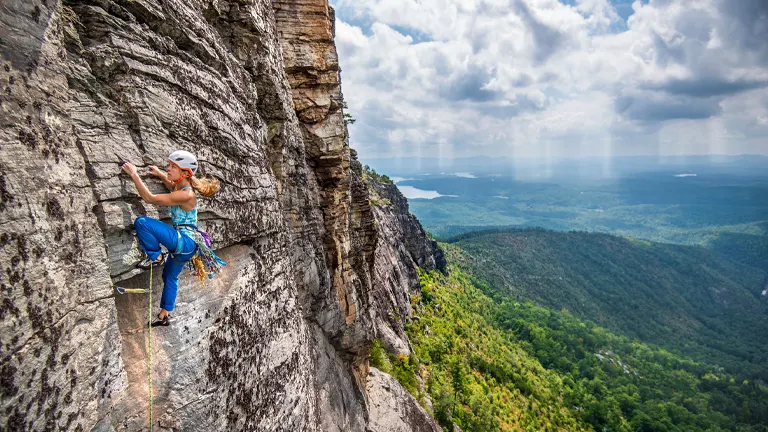
Adventure seekers can test their climbing skills on the rugged rock faces of Pisgah. The forest provides opportunities for both traditional and sport climbing, with challenges suitable for climbers of different abilities. The striking granite outcrops and cliffs create a dramatic backdrop for a thrilling rock-climbing experience.
7. Scenic Drives
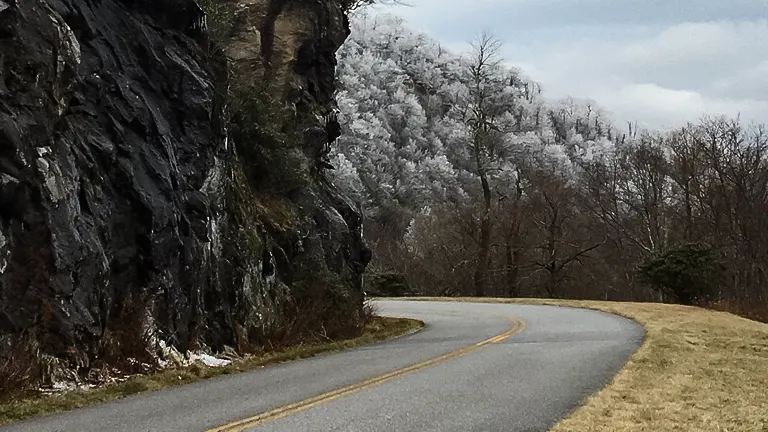
For those seeking a more relaxed experience, Pisgah National Forest offers picturesque scenic drives. The Blue Ridge Parkway, known as “America’s Favorite Drive,” winds its way through the forest, providing stunning overlooks and opportunities to appreciate the vastness of Pisgah’s landscapes without leaving the comfort of a vehicle.
8. Water Activities
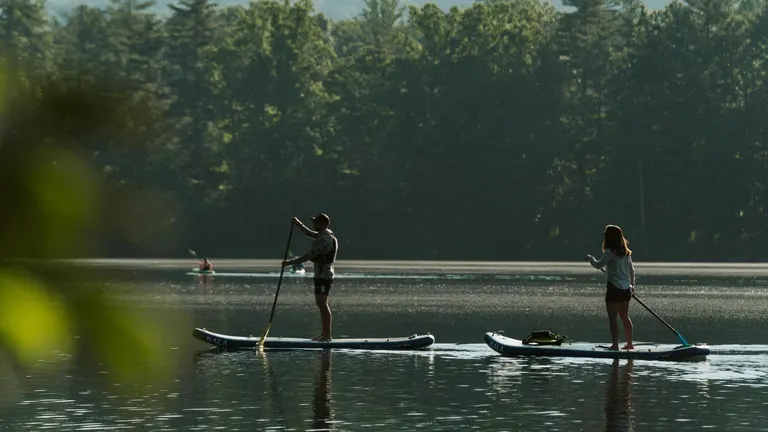
Pisgah’s numerous waterways invite visitors to enjoy various water activities. Whether it’s kayaking down rushing rivers, paddleboarding on serene lakes, or tubing along gentle streams, the forest provides diverse aquatic settings for water enthusiasts to cool off and connect with nature in a unique way.
Conservation and Management
- Sustainable Logging Practices: Pisgah National Forest implements sustainable logging practices as part of its conservation and management strategy. Carefully planned timber harvesting, guided by scientific research and environmental assessments, ensures that the forest’s valuable timber resources are utilized without compromising the long-term health of the ecosystem. These practices support both economic interests and the maintenance of healthy, resilient forest ecosystems.
- Preservation of Old-Growth Forests: A critical aspect of Pisgah’s conservation efforts involves the preservation of old-growth forests. These pristine areas, characterized by towering ancient trees and rich biodiversity, are protected from logging and other disturbances. Preserving old-growth stands enhances habitat quality, maintains genetic diversity, and serves as a living record of the region’s ecological history.
- Wildlife Habitat Restoration: Conservation initiatives in Pisgah National Forest include targeted wildlife habitat restoration projects. These efforts aim to enhance and restore habitats crucial for the diverse fauna of the region. Restoration activities may involve reforesting certain areas, controlling invasive species, and creating wildlife corridors to support the movement of species across the landscape.
- Water Quality Management: Pisgah recognizes the importance of maintaining pristine water quality in its numerous streams and rivers. Management strategies focus on minimizing sedimentation, pollution, and other human impacts that could degrade aquatic ecosystems. Riparian buffer zones and erosion control measures are implemented to safeguard water quality and support the health of aquatic species.
- Invasive Species Control: To protect the native flora and fauna, Pisgah National Forest actively manages invasive plant species. Invasive species control involves monitoring and implementing strategies to limit the spread of non-native plants that can outcompete indigenous vegetation and disrupt natural ecosystems. These efforts contribute to the overall resilience of the forest’s diverse plant communities.
- Preservation of Rare and Endangered Species: Pisgah plays a key role in the conservation of rare and endangered species endemic to the southern Appalachians. Through habitat preservation, monitoring programs, and collaboration with conservation organizations, the forest aims to safeguard the survival of vulnerable species, contributing to the broader regional conservation efforts.
- Public Education and Outreach: An integral part of Pisgah’s conservation strategy involves public education and outreach programs. Through interpretive centers, guided tours, and informational materials, the forest seeks to engage visitors and local communities in understanding the importance of conservation. Educating the public fosters a sense of stewardship and encourages responsible recreation practices.
- Fire Management for Ecosystem Health: Controlled fire management is employed in Pisgah to maintain ecosystem health and diversity. Prescribed burns help reduce the risk of uncontrolled wildfires, regenerate certain plant species, and create habitat conditions favorable to a variety of wildlife. This intentional approach to fire management aligns with natural ecological processes in the forest.
Recommendation
I highly recommend exploring Pisgah National Forest for a captivating fusion of natural beauty and cultural significance. This forest, renowned for its varied ecosystems, iconic landmarks, and recreational opportunities, offers a unique and immersive adventure. Immerse yourself in mindful outdoor activities such as hiking and wildlife observation, actively contributing to ongoing conservation efforts. The scenic trails, historical points of interest, and collaborative conservation projects make Pisgah National Forest an essential destination for those seeking a harmonious blend of nature and recreational exploration.
Conclusion
In conclusion, Pisgah National Forest stands as a testament to the beauty and ecological richness of the southern Appalachian region. With its diverse landscapes, ranging from mile-high peaks to cascading waterfalls and old-growth forests, Pisgah offers a haven for outdoor enthusiasts and nature lovers alike. Beyond its breathtaking scenery, the forest holds historical significance as the birthplace of American forestry, featuring landmarks such as the Cradle of Forestry. As a conservation stronghold, Pisgah actively manages its resources, preserves old-growth stands, and serves as a vital wildlife corridor. Whether one seeks the thrill of mountain biking, the tranquility of hiking, or the marvels of diverse plant and animal species, Pisgah National Forest unfolds as an enriching tapestry of natural wonders, inviting all to explore, appreciate, and contribute to its enduring legacy.
Encouraging Responsible Visitation
Contemplating my experiences in Pisgah National Forest, I am motivated to encourage purposeful exploration. This dynamic and ever-changing terrain thrives when individuals engage proactively with the environment. Whether you’re an avid hiker, a photography enthusiast, or a family in search of a weekend retreat, every moment spent in Pisgah National Forest presents a chance to actively participate in its ongoing conservation initiatives.
FAQs
- What is the significance of the Weeks Act in relation to Pisgah National Forest?
The Weeks Act, passed in 1911, empowered the acquisition of lands for national forests in the eastern U.S. Pisgah’s establishment in 1916 was a result, making it one of the first national forests in the region. - Are there any designated wilderness areas within Pisgah National Forest?
Yes, Pisgah boasts two designated wilderness areas – the Linville Gorge Wilderness and the Shining Rock Wilderness – offering pristine and protected environments for a truly immersive outdoor experience. - What is the significance of the Cradle of Forestry in Pisgah National Forest?
The Cradle of Forestry, formerly the Biltmore Forest School, is the birthplace of American forestry. It played a pivotal role in the establishment of the U.S. Forest Service and is now an educational and recreational site. - How does Pisgah National Forest contribute to biodiversity conservation?
Pisgah actively manages its resources, preserves old-growth forests, and serves as a crucial wildlife corridor. These efforts aim to conserve and enhance the rich biodiversity of the southern Appalachian region. - What are some popular mountain biking trails in Pisgah National Forest?
Pisgah is renowned for its mountain biking trails. Notable ones include the Sycamore Cove Trail, Black Mountain Loop, and the challenging Farlow Gap, known as one of the toughest trails in the forest. - Can visitors engage in water activities within Pisgah National Forest?
Absolutely! Pisgah’s numerous waterways provide opportunities for kayaking, paddleboarding, and tubing. Whether on rushing rivers or serene lakes, visitors can enjoy diverse aquatic experiences. - How does Pisgah National Forest contribute to fire management for ecosystem health?
Controlled fire management, including prescribed burns, is employed to maintain ecosystem health. This practice reduces the risk of uncontrolled wildfires, regenerates certain plant species, and creates favorable habitats for wildlife. - What are some of the unique plant species found in Pisgah National Forest?
Pisgah is home to diverse vegetation, including the Fraser Fir, Eastern Hemlock, Flame Azalea, and Yellow Birch. These plant species contribute to the forest’s ecological richness and visual appeal.
Whether you’ve hiked its trails or simply enjoyed the scenery, Pisgah has a way of leaving a lasting impression. It’s a place where nature speaks for itself, inviting everyone to appreciate the simple beauty it offers. As we take our leave, the memories of Pisgah’s serene landscapes will stay with us, a reminder of a peaceful escape in the heart of the Southern Appalachians.


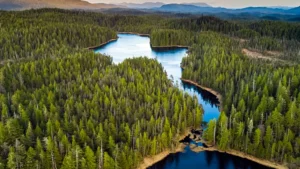
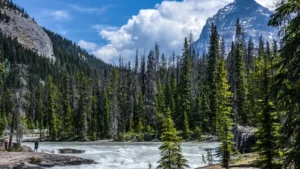
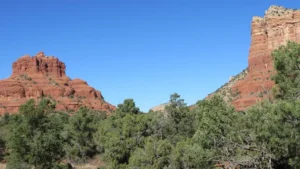
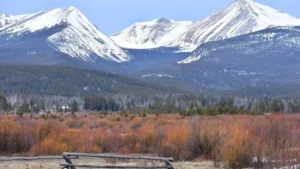

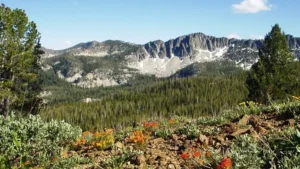

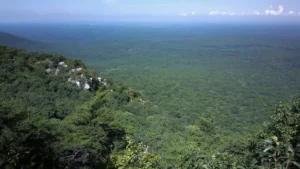
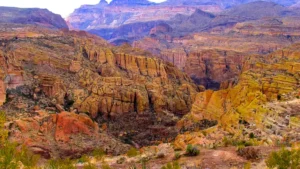
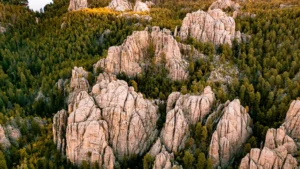
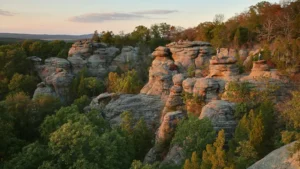

Leave your comment